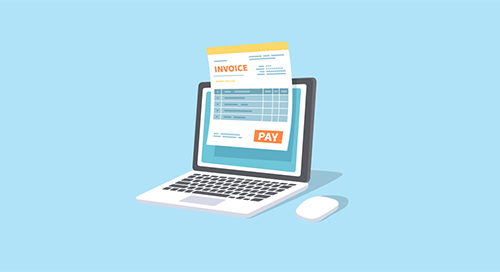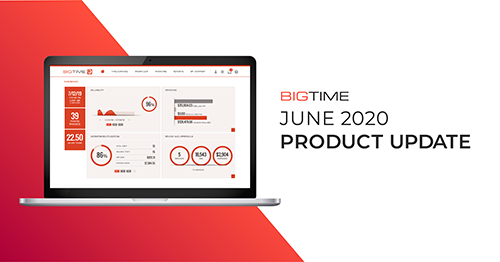
Professional services project management is all about delivering projects more efficiently and increasing billable utilization. However, even at world-class services organizations, the best project managers and team members will experience over budget projects every once in a while resulting in project cost overruns. So if somewhere along the way you’re over budget with project management, here is a 5-step guide to avoid cost and budget overruns, with a focus on the critical success factors in project management for how to get a project back on track.
Why Do Over Budget Projects Occur Resulting in Project Cost Overruns?
Step 1: Identify the Problem
Arguably, the hardest part of over budget projects in project management is identifying problems before they become unrepairable. The longer that a problem festers in a project, the harder it becomes to fix. In order to successfully detect project issues, a project manager needs a commanding grasp of the entire project life cycle. A project manager needs to understand where a project stands today and how much effort is left. Typically, these two factors are referred to as a project’s:
- Actuals-to-date
- Estimate-to-complete

Identifying project issues requires a grasp of where a project stands today, and how much effort is left.Add the two together and you’ll get the project’s estimate-at-completion, or the value that you should be tracking against your budget. Tracking a project’s estimate-at-completion against its budget acts like an early warning indicator for over budget projects, alerting project managers when a specific aspect of a project may have taken more effort than intended. To be effective, however, project managers need to maintain accurate resource management projections and visibility into the project in real-time. As an added bonus, when you have the right tools in place, your estimate-to-complete can feed into your organization’s revenue forecasting models. This helps to build a more accurate and holistic revenue forecast for your firm. If you find yourself experiencing over budget projects or problematic project budget management, there may still be time to contingency plan and course correct. When a project schedule and budget are heading off track, here are a few project management budgeting methods to ensure project delivery success.
What to Do When a Project is Over Budget
Step 2: Determine the Project Status
Once you notice something has gone wrong, the next project objective is to determine what happened. A project manager’s initial reaction (or anyone’s for that matter) is often to ask who is responsible for the mistake. Instead of wasting crucial time playing the blame game, ask why over budget projects occurred in the first place. And don’t just ask why once; ask it a few times to try and illuminate the root cause of the over budget projects. An effective way to shed light on an issue is to use the 5 Whys technique to peel back each layer of a problem. Not only will this technique help you prevent the same problem from happening again on a future project, but it could also provide a critical path towards ultimately course-correcting the project management budget in trouble. In addition to identifying the root cause of the problem, it is useful to pay attention to the project’s critical path. A Gantt chart presents a clear representation of your project milestones in relation to your actuals-to-date and estimate-to-complete so you can identify where your project’s critical path falls in terms of other dependencies, priorities, and deadlines. Once you have identified why there are over budget projects, you can now address the root of the issue and improve project performance before it gets worse.
How to Deal With Project Cost Overruns and Get a Project Back on Track
Step 3: Adjust Key Result Areas
Hope springs eternal, but it doesn’t fix a failing project or over budget projects. The biggest mistake a project manager can make when something goes wrong is to hope that everything will work out in the end. It may sound like a no brainer, but it happens all of the time—the idea that a small mistake here or there will “wash out” in the end. More often than not, instead of “washing out”, these mistakes add up. When a task takes a little more effort than expected, it is easy to not think much of it. However, it is the project manager’s responsibility to adjust for these discrepancies as the project plan moves along. One tactical action that project managers can take to control over budget projects is to identify the project’s key result areas, also known as critical success factors in project management. These are the big-bucket items that must be completed on time and to a high degree of quality in order to achieve project success. Much like an intricate game of chess, project managers can shift around priorities to accommodate for discrepancies in the project’s plan. For example, if you know that a client is more budget-conscious than time-sensitive, you may be able to play around with resource utilization in project management. You might trim the team to stick to the budget but at the expense of time to market. If scope or quality are factors that can be adjusted, you may be able to make small reductions that don’t jeopardize the ultimate goal of the project while still achieving your key result areas.
Critical Success Factor in Project Management
Step 4: Client Visibility into Project Performance
If shifting around priorities isn’t enough to save your over budget projects, it’s time to talk with your client. It’s important to start the conversation openly to work towards a mutually beneficial resolution. The last thing you want to do is go straight to the defensive. Bring your root cause analysis and priority adjustments to the table so they know you’re not simply throwing in the towel. If the goal of the conversation is to renegotiate the scope or budget of the project proposal, help the client see why it’s in everyone’s interest to provide some wiggle room. After all, adhering to a tight or unreasonable project budget often results in cutting corners and producing lower quality work. If the client is looking for demonstrable value, then it is in their best interest to be flexible. One approach that is worth exploring is a revisit of the project’s A’s and D’s (assumptions and dependencies) that were agreed upon as the basis for the project’s budget and contract structure. A project’s A’s and D’s are often crafted by a more senior-level team member during the scoping process or as the project proposal template is written. If the client steers the delivery project manager away from these A’s and D’s during the course of the project, it can quickly lead to problems and over budget projects. If your root cause analysis highlights problems in this area, it can be a good opportunity to renegotiate the project’s budget with your client and get things back on track. Regardless of which approach you take when chatting with your client, there is one important rule to follow—renegotiate once, and only once. Working with your client to adjust the budget or scope of a project is more than an unpleasant experience. It erodes trust and jeopardizes the long-term relationship. Yes, sometimes it is an essential step that must be taken, but if you think doing it once is bad, try doing it twice on the same project. Make sure you have fully uncovered the reason your project went over budget, understand what will be needed to get it back on track, and negotiate your correction once. Client communication is typically both a project success and failure example—ensure you are effective, proactive, and transparent throughout the project life cycle.
Effective Services Project Management
Step 5: Improve Project Performance to Improve Business Results
To wrap it all up, sooner or later, every project manager will find themselves at the helm of struggling or over budget projects. Being able to correct that project is a valuable skill and one of many critical success factors in project management. Regardless of the approach you take to save the project, it’s important to digest what went wrong, what you did to course correct the project budget, and what you will do to prevent it from happening again. Project managers that have strong visibility into their project portfolio are the most successful when it comes to spotting, correcting, and learning from troubled projects. If every project you run feels like a heroic quest, rather than a well-planned journey, it’s probably time to review your processes to see where you can inject more visibility and gain more control. After all, every project manager’s goal is the same—deliver on time and on budget successful projects to ultimately improve business results.
In Summary
An over budget project, or project cost overrun, results when the budgeted cost at completion is higher than the original budgeted estimate. There are 5 steps that professional services organizations can implement to avoid over budget projects and optimize project cost management:
- Identify the problem
- Determine the project status
- Adjust key result areas
- Provide client visibility into project performance
- Improve project performance to improve business results
If a project cost overrun occurs, you need to understand what needs to happen next in order to get back on track. To learn how BigTime Software can support these efforts and drive more successful project deliveries, schedule a demo of our project budget management software today. Or, read on to learn more about conducting a Project Profitability Analysis, and download our Metrics That Matter white paper to dive into other core metrics that affect overall project and service organization success.
Frequently Asked Questions About Over Budget Projects and How to Deal With Project Cost Overruns
Why would a project go over budget?
A project can go over budget when there is poor tracking of a project’s actuals-to-date and estimate-at-completion against its budget. Project managers need to maintain accurate resource management projections and have visibility into the project in real-time.
How can projects avoid going over budget?
Project managers need strong visibility into their project portfolio to avoid over budget projects. Processes should be reviewed to see where you can inject more visibility, identify critical success factors, and gain more control.
How do you deal with project cost overruns?
There are 5 steps for how to deal with project cost overruns and avoid over budget project management: 1. Identify the problem 2. Determine the project status 3. Adjust key result areas 4. Provide client visibility into project performance 5. Improve project performance to improve business results
How can a project manager successfully manage a project budget?
Arguably, the hardest part of project management is identifying the problems before they become unrepairable. In order to successfully detect project issues and budget overruns, there are two factors a project manager needs visibility into to understand the status of a project: actuals-to-date and estimate-to-complete.
What is overrun in project management?
A budget or cost overrun in project management is when a project incurs an unexpected increase in budget that results in higher than projected total project costs.
Why is project cost management important?
Project cost management involves project management budgeting methods that collectively help control costs to ensure that the project budget isn’t exceeded.




.png)


